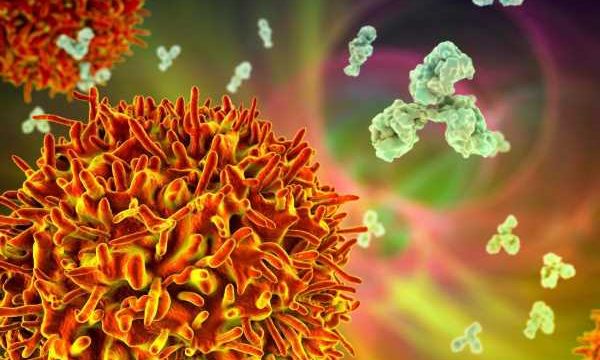In a recent study posted to the bioRxiv* preprint server, a team of researchers examined the memory B cell repertoire of individuals immunized with three doses of mRNA-based coronavirus disease 2019 (COVID-19) vaccine.
 Study: Increased Potency and Breadth of SARS-CoV-2 Neutralizing Antibodies After a Third mRNA Vaccine Dose. Image Credit: Kateryna Kon/Shutterstock
Study: Increased Potency and Breadth of SARS-CoV-2 Neutralizing Antibodies After a Third mRNA Vaccine Dose. Image Credit: Kateryna Kon/Shutterstock
The currently used mRNA-based severe acute respiratory syndrome coronavirus 2 (SARS-CoV-2) vaccines protect against the original Wuhan-Hu-1 strain but do not offer complete protection against breakthrough infections (BTIs) from all SARS-CoV-2 variants of concern (VOCs), including Omicron. However, studies have shown that the third dose of mRNA vaccine initially increases circulating anti-Omicron neutralizing antibodies (NAbs) with titers 10-20-fold lower than against Wuhan-Hu-1, in many cases, thus insufficient to prevent BTIs. Consequently, Omicron-induced BTIs have been reported in vaccinated and convalescent individuals alike.
About the study
In the present study, researchers examined how the memory B cell repertoires in individuals who received the third dose of vaccine protected them from severe illness.
They sampled 43 volunteers with no prior history of SARS-CoV-2 infection between January 21, 2021, and December 14, 2021, of which eight and 35 had received the Moderna and the BNT162b2 mRNA vaccines. All the participants were in the 23 to 78 years age group, and 53% of them were male, and 47% were female.
The researchers collected blood samples from test subjects at 2.5 weeks after the first dose, 1.3 months and five months after the second vaccine dose, and one month after the third dose. The researchers used flow cytometry experiments using phycoerythrin (PE) and Alexa Fluor 647 (AF647) labeled receptor-binding domains (RBDs) to evaluate the effect of the third vaccine dose on the memory B cell compartment of all 43 study participants.
Study findings
Under normal physiologic conditions, memory B cells do not produce NAbs. When challenged with antigen as in a BTI or vaccination, these cells undergo clonal expansion and produce antibody-secreting plasma cells, memory, and germinal center B cells.
The authors noted that after the third dose of vaccine was administered in study participants, there was an increase in memory B cells expressing immunoglobulin G (IgG), and the levels of CD71 reduced, suggesting that germinal center-derived memory B cells dominated this compartment.
Further, the expanded clones of memory B cells accounted for 33% and 47% of the repertoire five months after the second and one month after the third dose, respectively. The relative increase in clonality was partly due to an average 3.1-fold expansion of persisting anti-RBD specific memory B cells. The persisting clones showed only a moderate number of additional cell divisions and accumulated on average only two additional somatic hypermutations making it unlikely that the additional clonal expansion required further germinal center residence.
After the third vaccine dose, there was a 1.7-fold increase (statistically insignificant) in the number of new unique clones of memory B cells. These cells were more mutated than those present five months after the second vaccine dose, as were the antibodies represented only once (singlets). In both cases, the number of somatic mutations was significantly greater at five months after the second dose indicating persistent B cell evolution and cell division.
Furthermore, after receiving the third dose, all the subjects showed expanded clones of memory B cells and an over-representation of variable (VH) 3-30, VH3-53, and VH4-31 genes, thus indicating the bias in immunoglobulin heavy chain gene (IGVH) gene representation in memory cells is common among most individuals.
The authors examined 18 paired antibody pairs from five individuals sampled five months after receiving the second dose and one month after receiving the third dose to examine whether these NAbs showed an increased breadth. As expected, most antibody pairs isolated before and after the third vaccine dose showed exceptionally broad neutralization. While 15 out of 18 antibody pairs neutralized the Delta pseudovirus, 11 neutralized Omicron pseudovirus. Biolayer interferometry (BLI) analysis showed that these antibody pairs were dominated by antibodies classes 1/2, 2/3, and 3.
Conclusions
To summarize, immunization with the third dose of an mRNA-based COVID-19 vaccine is associated with the expansion and evolution of the memory B cell compartment. Furthermore, these B cells produce NAbs, over 50% of which effectively neutralized Omicron pseudoviruses.
These observations show that individuals who have received three vaccine doses have a diverse memory B cell repertoire. Although these B cells might not be contributing to circulating plasma antibody levels, upon getting challenged with antigen in the form of a vaccine or infection, respond rapidly and produce NAbs within 3-5 days that are capable of neutralizing immunity-evading variants, such as Omicron.
Together, the study data offers a reasonable explanation that how the third dose of an mRNA vaccine not designed to protect against all SARS-CoV-2 variants could contribute to the enhanced protection against variant-induced severe COVID-19.
*Important notice
bioRxiv publishes preliminary scientific reports that are not peer-reviewed and, therefore, should not be regarded as conclusive, guide clinical practice/health-related behavior, or treated as established information.
-
Muecksch, F. et al. (2022) "Increased Potency and Breadth of SARS-CoV-2 Neutralizing Antibodies After a Third mRNA Vaccine Dose". doi: 10.1101/2022.02.14.480394. https://www.biorxiv.org/content/10.1101/2022.02.14.480394v1
Posted in: Medical Science News | Medical Research News | Disease/Infection News
Tags: Antibodies, Antibody, Antigen, B Cell, Blood, Cell, Cell Division, Coronavirus, Coronavirus Disease COVID-19, covid-19, Cytometry, Evolution, Flow Cytometry, Gene, Genes, immunity, Immunization, Immunoglobulin, Omicron, Pseudovirus, Receptor, Respiratory, SARS, SARS-CoV-2, Severe Acute Respiratory, Severe Acute Respiratory Syndrome, Syndrome, Vaccine

Written by
Neha Mathur
Neha Mathur has a Master’s degree in Biotechnology and extensive experience in digital marketing. She is passionate about reading and music. When she is not working, Neha likes to cook and travel.
Source: Read Full Article
